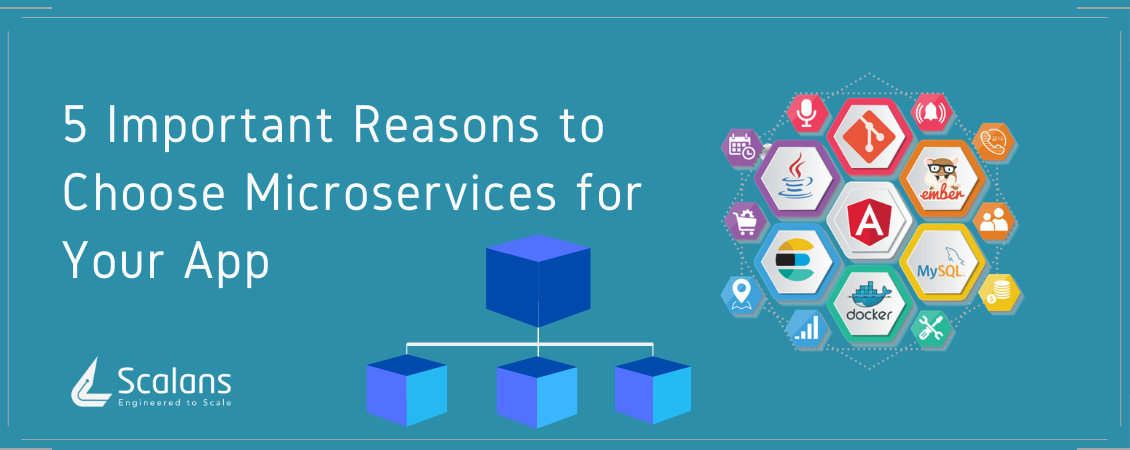
5 Important Reasons to Choose Microservices for Your App
September 27th, 2020
Microservices is a decentralized approach of app development wherein a single application is a suite of loosely coupled services or functionalities, each running on its own and communicating independently.
This is in sharp contrast to the monolithic architecture where the entire application is centralized into a single package of dependent services.
A type of service-oriented architecture, microservices is gaining traction everyday with many organizations opting for it; in fact, a survey by Red Hat revealed that 69% of respondents preferred to use microservices for both new and existing applications.
Let’s check out why choosing microservices will prove useful for building a robust application.
- Individual Scalability
The biggest advantage of using microservice architecture is that a specific service/component in the application can be individually scaled without the need to scale the whole system. This ensures higher productivity to developers and saves resources and time.
But, in the case of monolithic architecture, just to scale a single service, the entire app has to be scaled completely.
- Continuous Deployment
It follows the Continuous Integration / Continuous Delivery model where cross-functional teams write, test, and deploy the app code many times in a single day. This ensures shorter time-to-market, unlike the monolithic approach that follows a predefined pipeline for app development.
All the microservices can be deployed independently in separate containerization platforms like Docker and their functions orchestrated by Kubernetes.
- Easy Fault Isolation
With a decoupled system of components, it is easier to isolate faults that occur in any part of the microservice architecture.
Instead of bringing down the entire application to troubleshoot the error, the respective service is isolated, cleared and then redeployed. Basically, microservices use patterns like Bulkhead and Circuit breaker to prevent failure cascades usually seen in monolithic architecture.
- Multiple Technology Support
Adopting microservices means getting access to varied technologies in a single application. Be it programming languages, databases, communication protocols or testing tools, microservice architecture can easily integrate different technologies depending on one’s choice.
This offers businesses the flexibility to hire developers with diverse technical expertise and choose from different tech stacks to build apps.
- Highly Business-Oriented
Last, but not the least, microservices is a concept that is organized around business capabilities, as suggested by renowned software developer, Martin Fowler. Rather than organizing teams around technological capabilities, microservices employ cross-functional teams, each focusing on a single business functionality.
Thus, a single team will have the ownership of a particular service; all the related issues will be identified and solved by the team without affecting other services.
Conclusion
Microservices is particularly beneficial for businesses handling large volumes of customers on a daily basis. And, the combination of microservices with Node.js is definitely a game changer. Do implement it to develop mission-critical apps and considerably improve user experience.



